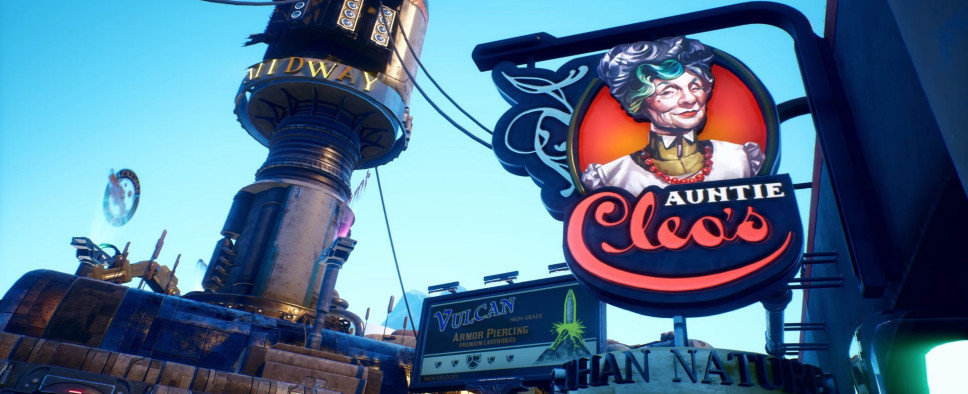The Outer Worlds Interview
-
Category: News ArchiveHits: 1146

The Outer Worlds, Obsidian Entertainment's latest offering, sets itself apart from other RPGs by its zany setting that revolves around corporations run amok. And if you'd like to learn how Obsidian came up with all the corporations inhabiting The Outer Worlds, that universe's materialistic religions, and the game's companions, you should check out this recent PlayStation Blog interview with Tim Cain and Leonard Boyarsky.
Here are a few sample questions to get you started:
PlayStation Blog: Why did Obsidian decide to frame society in Halcyon around all-encapsulating capitalism?
Leonard Boyarsky: That came about as a reaction to Tim’s wanting to explore the inherent silliness of corporations and their desire to brand everything. Those initial sillier discussions led to us brainstorming what would happen if those same corporations were in complete control of a society. Which was decidedly not silly.
From there, how did they decide on the types of schmuck companies? Did you start with Saltuna and work back from there or start from the concept of Spacer’s Choice and then decide the products?
Tim Cain: The first company was Spacer’s Choice, which was a riff on Trucker’s Choice Pep Pills from The Simpsons. I imagined it as a company that made almost every type of product, but none of them were good. But they were cheap. After that, I created a rival company, which was Auntie Cleo’s, and they tried to differentiate themselves as better than everyone else.
Other companies quickly followed based on the needs for certain products in the game, like C&P for food, Hammersmith for weapons (oddly enough, they sold no hammers), Brook & Olson for armour, and Rizzo’s for candy and soda. Every time I invented a company, I tried to imagine some rival companies, so Hammersmith had Aramid Ballistics, Joch, and T&L. Each company had something it was known for, like higher condition maximum or more mod slots. Something to make the player get an impression of what each brand was best at.
What was the process like writing all the marketing slogans?
Tim Cain: I wrote most of the slogans over a short period of time. I usually riffed on existing slogans (like “it’s near this complete breakfast” or “boarst pockets!”). Sometimes I liked to imagine how a nice-sounding slogan would end badly, such as “Tastes fresh because…” I thought of endings like “it’s full of preservatives” or “we inject it with ozone,” but I finally settled on the simple “it was.” I found that the simple slogans really made people laugh.

